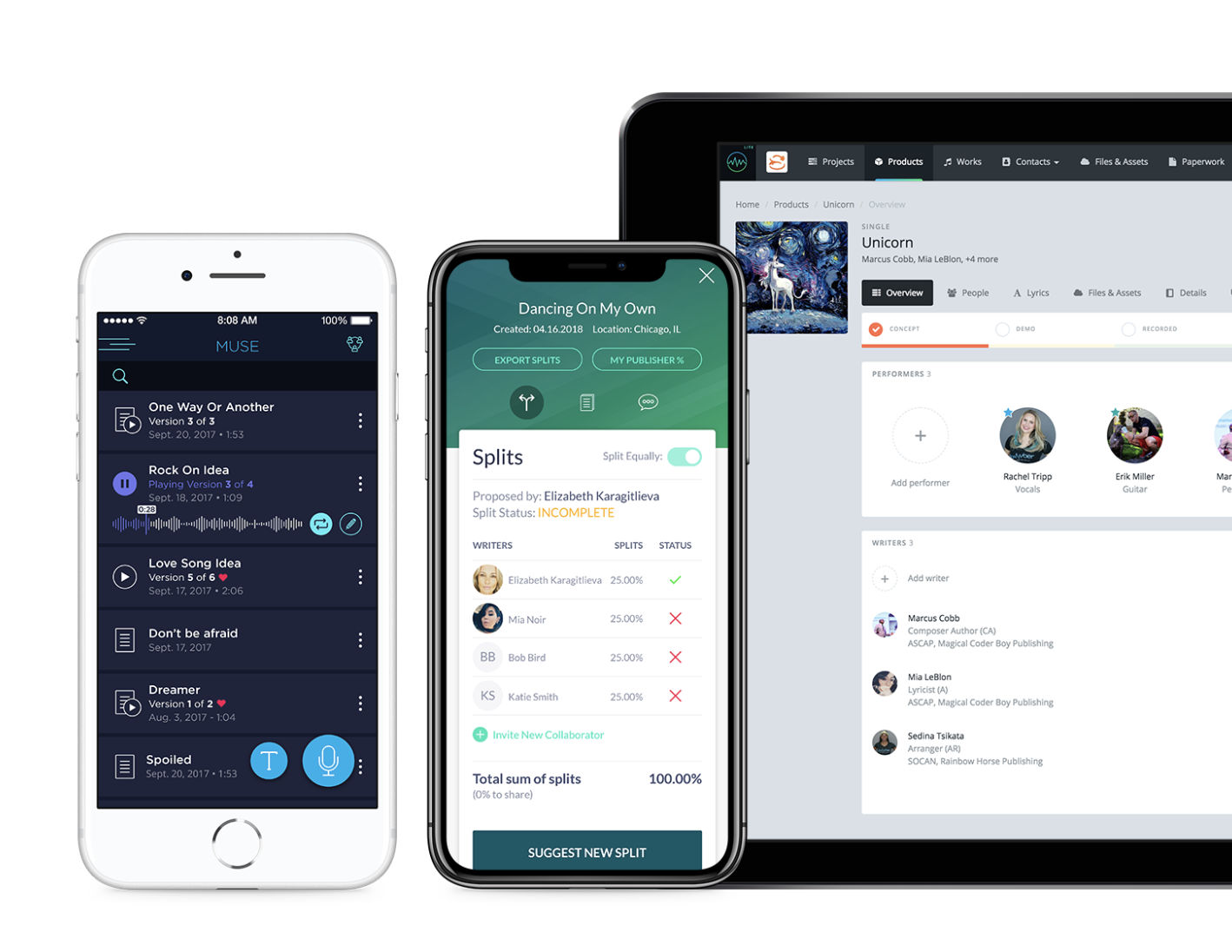Recent Funding
Auto Added by WPeMatico
Auto Added by WPeMatico
Shift Technologies, an online marketplace for used cars, has closed a Series D financing round of more than $140 million in equity and debt.
The round, which consists of about $70 million in debt and $71 million in equity, was led by automotive retailer Lithia Motors. Bryan DeBoer, CEO and president of Lithia, will join Shift’s board of directors.
Previous investors Alliance Ventures, BMW iVentures, DCM, DFJ, G2VP, Goldman Sachs Investment Partners and Highland Capital also participated. This new capital brings Shift’s total financing of equity and debt to $265 million.
Shift, which is based in San Francisco, serves car buyers and sellers. The company, founded in 2013, has built a software platform that lets customers shop for cars, get financing and schedule test drives. Car owners can use the platform to sell their vehicle, as well. Shift says any car it buys must pass a “rigorous” 150+ point inspection.
The company plans to invest in its technology platform and scale its engineering staff from 35 to more than 80 people by the end of 2019, CEO George Arison noted to TechCrunch in an email. Shift employs 380 people. The company’s platform has focused on scaling in California; it covers about 80 percent of that market. But the company has long had its sights set on expanding beyond the Golden State.
Shift is focused on, and is heavily investing in, its peer-to-peer business, in which the company acquires cars from individuals and then sells them. Buying, refurbishing and then selling cars online is a logistics-heavy business pursuit, and one that has seen a number of competitors come and go in the past several years. But Arison says the company has not just survived; it has grown.
Shift didn’t provide revenue numbers. But Arison cited the company’s more than 70 percent revenue growth in the past six months as an example of the company’s success.
The company did have a partnership with rental giant Hertz, but that has since ended. At the time, Shift was going to feature vehicles from Hertz’s fleet inventory. It was meant to be a win-win: Hertz gets access to a new retail sales channel and Shift benefits from the rental car company’s ready supply of lightly used cars.
The partnership ended after Hertz opened its own retail stores that competed against Shift
Powered by WPeMatico
Sisense, a company that helps customers understand and visualize their data across multiple sources, announced an $80 million Series E investment today led by Insight Venture Partners. They also announced that Zack Urlocker, former COO at Duo Security and Zendesk, has joined the organization’s board of directors.
The company has attracted a prestigious list of past investors, who also participated in the round, including Battery Ventures, Bessemer Venture Partners, DFJ Venture Capital, Genesis Partners and Opus Capital. Today’s investment brings the total raised to close to $200 million.
CEO Amir Orad says investors like their mission of simplifying complex data with analytics and business intelligence and delivering it in whatever way makes sense. That could be on screens throughout the company, desktop or smartphone, or via Amazon Alexa. “We found a way to make accessing data extremely simple, mashing it together in a logical way and embedding it in every logical place,” he explained.
It appears to be resonating. The company has over 1000 customers including Expedia, Oppenheimer and Phillips to name but a few. Orad says they are actually the analytics engine behind Nasdaq Corporate Solutions, which is the the main investor relations system used by CFOs.
He was not in the mood to discuss the company’s valuation, an exercise he called “an ego boost he doesn’t relate to.” He says that he would prefer to be measured by how efficiently he uses the money investors give him or by customer satisfaction scores. Nor would he deal with IPO speculation. All he would say on that front was, “When you focus on the value you bring, positive things happen.”
In spite of that, he was clearly excited about having Urlocker join the board. He says the two spent six months getting to know each other and he sees a guy who has brought several companies to successful exit joining his team, and perhaps someone who can help him bring his company across the finish line, however that ultimately happens. Just last month, Cisco bought Urlocker’s former company, Duo Security for $2.35 billion.
For now Sisense, which launched in 2010, has another $80 million in the bank. They plan to add to the nearly 500 employees already in place in offices in New York, Tel Aviv, Kiev, Tokyo and Arizona. In particular, they plan to grow their international presence more aggressively, especially adding employees to help with customer success and field engineering. Orad also said that he was also open to acquiring companies should the right opportunity come along, saying “Because of talent, technology and presence, it’s something you have to be on lookout for.”
When a company reaches Series E and a couple of hundred million raised, it’s often a point where an exit could be coming sooner than later. By adding an experienced executive like Urlocker, it just emphasizes that possibility, but for now the company appears to be growing and thriving, and taking the view that whatever will be, will be.
Powered by WPeMatico
Roy Raymond opened a little store called Victoria’s Secret, now one of the most popular lingerie businesses in the world, because he was embarrassed to buy lingerie for his wife in department stores.
The brand was founded on the premise that men needed a safe space to buy lingerie for women and women needed a larger variety of sexy, angelic bras and other intimates to wear for men.
But it’s 2018. Women, today, buy lingerie for themselves. They want to be comfortable and functional and beautiful all at the same time.
“[Victoria’s Secret] was always about the angel and the fantasy and a lot of push up and wire so women’s bodies could conform to a marketing campaign,” said Michelle Cordeiro Grant, founder and CEO of direct-to-consumer lingerie startup Lively, and a former Victoria’s Secret senior merchant. “Inspiring women to be Candice Swanepoel is not feasible for most women in the world. I wanted to create a product that is for women and by women.”
Recognizing the gap in the market for bras that don’t stab you with underwire, she built Lively. To date, the company has raised $15 million in venture capital funding, including a $6.5 million Series A investment from GGV Capital, NF Ventures and former Nautica CEO Harvey Sanders announced today.
“Previously, women had two rows of products in their drawer. One row they wanted to be seen in … and the other row was ones that were more basic and comfortable — but no nobody wanted to be seen in them.”
Though she began work on Lively before the #MeToo movement, Cordeiro Grant says it pushed the business forward in a big way. In the last year, the size-inclusive startup has seen 300 percent growth. What began as a direct-to-consumer company selling $35 bras and underwear has expanded to offer swimwear, activewear and loungewear. Physical retail is next.
“Women have been ready for a conversation like ours,” she said.

The startup is using the capital to open brick-and-mortar stores, a trend among other e-commerce businesses. The first of several stores in the pipeline, a 2,700-square-foot location, opened in New York City’s SoHo neighborhood this July. Stores in Chicago, Los Angeles and Dallas are also on the docket, as is a partnership with Nordstrom that will have Lively selling a limited distribution of intimates across 11 stores beginning next week.
Lively competes with several other brands of direct-to-consumer lingerie and activewear, including ThirdLove, AdoreMe, TomboyX and Outdoor Voices.
Powered by WPeMatico
The pace at which the scientific breakthroughs working to bend the machinery of life to the whims of manufacturing have transformed into real businesses has intensified competition in the biomanufacturing market.
That’s just one reason why Synvitrobio is rebranding as it takes on $2.6 million in new financing to pursue opportunities in biopharmaceutical and biochemical manufacturing. Under its new name, Tierra Biosciences, the company hopes to emphasize its focus on agricultural and biochemical products.
The company is one of several looking to commercialize the field of “cell-free” manufacturing — where biological engineers strip down the cellular building blocks of life to their most basic components to create processes that ideally can be more easily manipulated to produce different kinds of chemicals.
There’s a standard way to create these cell-free processes (described quite nicely in The Economist).
Grab a few quarts of culture with some kind of bacteria, plant or animal cells in it. Then use pressure to force the cells through a valve to break up their membranes and DNA. Give the goo a nice warm environment heated to roughly the average temperature of a human body for about an hour. That activates enzymes that will eat the existing DNA.
Put all of it in a centrifuge to separate out the ribosomes (which are the important bits). Take those ribosomes and give them a mixture of sugars, amino acids, adenosine triphosphate (the molecular compound that breaks down to provide energy for all biological functions) and new DNA with a different set of instructions on what to make and voila! Micro-factories in a test tube.

Along with co-founders Richard Murray of the California Institute of Technology and George Church, one of the living legends of modern genetics, chief executive officer Zachary Sun designed Tierra to be an engine for new biochemical discovery.
“Everything floats in the cytoplasm… We keep that internal stuff and that allows us to run reactions where a cell wall isn’t necessary. I want to reduce the complex system down to its component parts,” says Sun. “We look at this as a data collection problem. We want to use cell-free to tell you what to put either in a cell or in cell-free systems… We can collect more data faster using our cell-free system.”
The startup is already working with the Department of Energy research institution at Oak Ridge National Laboratory to develop processes to create vanillin (vanilla extract) and mevalonate (turpentine) from biomass.
It’s an approach that is already showing the potential for investment returns in life sciences and pharmaceuticals. For inspiration, Tierra can look to the South San Francisco-based Sutro Biopharma.
That company has signed a drug discovery agreement with Merck to develop new immune-modulating therapies (that bring the immune system into check) for cancer and auto-immune disorders, in a deal worth up to $1.6 billion if the company hits certain milestones — in addition to a $60 million upfront payment. Sutro raised more than $85 million in new funding in July (from investors including Merck) and just filed to go public on the Nasdaq.
According to Sun, the newly named Tierra has its own partnerships with global 2,000 companies in the works. “We’re looking to scale those commitments. We see the application space as being this natural products environment,” he says.
There’re multiple avenues to pursue, with the technology widely applicable to everything from pesticides to pharmaceuticals, flavorings and even energy.

Cyclotron Road team photos. 2016. Zachary Sun.
“Synthetic biology at its core is about applying engineering best practices to speed up the ‘design-build-test’ cycles in the reprogramming of existing or construction of new biological systems. By component-izing and modularizing the cell they can radically increase the speed of those cycles,” says Seth Bannon, a co-founder of the venture capital firm Fifty Years, which invests in startups commercializing “frontier” science.
For the investors, entrepreneurs and reporters who witnessed the birth of the cleantech bubble a decade ago and then tracked its implosion in subsequent years, the excitement this kind of technology elicits is another of history’s rhymes.
Technologies like Tierra’s aren’t new. San Diego-based Genomatica has been working on biological manufacturing for the past 18 years. The company is now exploring a cell-free system to grow chemicals that are used in the manufacture of materials like Lycra. Since 2008, Medford, Mass.-based GreenLight Biosciences has been working to bring its own biologically based zero-calorie sugar substitute to market.
What may be different now is the maturity of the technologies that are being commercialized and the perspective of the startups coming to market — who have the benefit of avoiding the missteps made by an earlier generation.
Investors led by Social Capital with participation from Fifty Years, KdT Ventures and angel investors seem to see a difference in these companies. And large research institutions are also marshaling resources to support the vision laid out by Sun, Murray and Church. DARPA, the National Institutes of Health, the Department of Energy, Cyclotron Road and Lawrence Berkeley National Laboratory, the National Science Foundation and the Gates Foundation have all backed the company, as well.
“So many therapeutic molecules come from nature. As the DNA of plants, animals and microbes is read in exponentially increasing volume, we expect to find useful and game-changing chemistry encoded by it. Tierra’s platform will allow us to look for molecules which might otherwise be buried in the complexity of cells’ metabolism,” says Louis Metzger, chief scientific officer of Tierra, who comes from a background of drug discovery.
Powered by WPeMatico
Much like smartphone manufacturers, drone companies have been adding to devices plenty of features over the past several years while making only modest improvements to battery life. But while your phone may boast “all-day” usage, a lot of the top drones only register flight times between 20-35 minutes.
Impossible Aerospace is looking to change up that equation, at least when it comes to commercial drones, with a dense design that is basically all battery. The company shared launch details of its US-1 drone today, and announced that it had closed a $9.4 million Series A from Bessemer Venture Partners, Eclipse Ventures and Airbus Ventures.
Its first product is a drone that can most notably stay airborne for about 120 minutes in optimal flying conditions, with a 75km (over 46 miles) straight-line range. It can carry 2.9 pounds of payload, but that drops the total flight time to 78 minutes.

For commercial customers, the added flight time can dramatically free up use cases, changing the mindset of operation from mission-based to much more exploratory.
The company’s website has an almost comical X-ray diagram of the US-1’s battery makeup showcasing a design that just looks like a big “X” of battery cells. Around 70 percent of the 15-pound drone’s weight is lithium-ion batteries, the company tells me.
This is a design built for old-school drone pilots; in order to achieve their lengthy flight time they had to ditch some additional components, the most controversial choice probably being the lack of any onboard obstacle-avoidance sensors. “Every aircraft design is a compromise,” Impossible Aerospace CEO Spencer Gore told TechCrunch in an interview. “There’s nothing that’s harder than to figure out what features you will include for some users that hurts the performance for everybody else that’s not going to use them.”
Gore said there were certain features the startup knew it wanted to drill down with its first drone and that the company had an “exciting product roadmap” of designs that made some different choices.
The US-1 starts at $7,500 and will ship in Q4 of this year.
Powered by WPeMatico
While many lament the death of local news, a small army of tech startups has been developing a new set of tools to figure out how to save it. In one of the latest developments, Hoodline — which has built a platform to ingest and analyse hundreds of terabytes of data to find and then write local news stories — has raised $10 million in a Series A round to help take its effort nationwide.
“We want to cover the news deserts that no one else is covering,” said Hoodline’s founder and CEO Razmig Hovaghimian. “It’s filling a gap. It’s filling a need.”
The San Francisco startup had once been called Ripple News (in reference to the news that “ripples out” from one event) but then took the name of a hyperlocal news blog network (cofounded by Eric Eldon, formerly of TechCrunch) that it acquired in 2016 after another Ripple began to make waves.
It is currently generating stories in 20 cities, with ABC, MSN, Yahoo, Hearst and CBS among the publishers that are partnering with Hoodline to use its content.
This latest Series A round was led by Neoteny, a seed and early stage investment firm out of Boston whose founder and lead partner, MIT Media Lab director Joichi Ito, is also joining Hoodline’s board.
Sound Ventures, Dentsu Ventures and Eric Schmidt’s Innovation Endeavors also participated, among other investors who asked not to be named.
Hoodline had been a part of Disney’s accelerator in 2017, so it too has backed the company, as has Rakuten, the Japanese e-commerce behemoth that acquired Hovaghimian’s previous startup, the crowdsourced online video subtitling startup Viki.
Hoodline is not disclosing its valuation, but from what we understand, it’s around $75 million and a bump up from its previous valuation.
Hoodline’s platform today has two parts: a local data wire producing local news stories; and a recommendation module that is somewhat similar to the likes of Outbrain and Taboola. Rather than recirculating stories from a wider network of clickable sites, however, it suggests stories from Hoodline’s inventory, alongside a publication’s own articles, to keep people engaged on a site for longer.
Hoodline inks free partnerships with media platforms to supply content for the first part; the second part has ads running alongside the recommended articles.
One of the big issues with local news and its decline is that, as more traditional publishers have moved to the internet to cut the costs of producing printed newspapers, they’ve found that the revenues and margins that they generated from the older activities have not translated to the newer medium.
Moreover, the issues of slim margins on ads that even exist for large, world-famous publications are only compounded for smaller ones: they have a hard time getting the economies of scale needed to make the ad-based model work. And then, even if they club together, they have to contend with the fact that their readerships have moved on to other forms of infotainment.
But as it turns out, there is still an appetite for local information.
“There are so many good stories that go uncovered,” Hovaghimian said. “Plus, forty percent of all searches have local intent.” Facebook’s new interest in local news and Google’s own experiments with local journalism aren’t simple good-will attempts at fostering more community; they reflect interests that these companies have observed among their user bases.
So now, while tech has arguably “killed” the local news business, it’s also been trying to save it — namely, in the form of providing more intelligent ways to run the news business, from the advertising technology and/or paywalls to fund it, through to disrupting and improving the means of producing it.
Hoodline is part of the new guard of media tech companies that has been looking at how the rise of technologies like AI and big data analytics can be used to help with the latter of these.
“Hoodline is bringing pioneering technology to the world of hyper-local news and content, while layering in editorial expertise and perspective. This uniquely allows them to craft dynamic stories across a wide range of verticals and outlets,” said Ito in a statement. “We’re incredibly excited to be partnering with Hoodline and Razmig as they continue to deliver consumers content that they want, but was previously not available to them.”
Hoodline is not the only one exploring how to tap into big data to build stories; there are many.
Among them, in the UK, the Press Association is working with a startup called Urbs to develop AI systems that can help surface interesting stories for (human) journalists to write. In the US, Automated Insights has been developing “robot” reporters to cover local sports and quarterly earnings beats.
Other efforts like LiveStories is also tackling a trove of publicly available information — in its case civic data — to visualise and shape narratives from it, products that potentially also make their way into the news.
Hovaghimian said that Hoodline’s system ingests around 250 terabytes of data from a pretty diverse range of sources, spanning from hyperlocal listings services like Yelp and Foursquare through to things like feeds of local high school football sports results. This is organised and passed through algorithms to surface interesting items that can be used in stories.
Editors, meanwhile, write templates that can be used for different types of stories, such as local food events, job trends in a particular city, or sports results from a local team. One person at the company described these templates as “advanced Madlibs.”
And for now, it’s as basic as this, too. Hoodline has bylined content written by journalists, but the content that is bylined to Hoodline is created by the company’s big data platform.
Those articles, it has to be said, are more anodyne than earth-shattering. But Hovaghimian says this is almost intentional, it’s to clear the way for more serious work.
“We are filling a gap and covering news that is not being covered, even if it’s just to test what audiences want to read,” he said. “This frees up resources for more journalistic pursuits.”
Whether or not publications dedicate resources to more journalistic pursuits to complement the Hoodline work, of course, is another matter.
Meanwhile, Hoodline also has journalists working on original content and to build these templates. The company currently has a ratio of around two engineers to one editor, Hovaghimian said, but believes that as it scales it will be bringing in fewer editors and more engineers: “At this point, it’s about growth now that we have figured out what our bottlenecks are,” he said.
As for what comes next, Hovaghimian said that the ambition is to bring this to more than just the US eventually, and to work with different kinds of partners beyond news organizations. Facebook and Google’s own interests in this area haven’t gone unnoticed and the company has thought about how it could partner with them, too.
Powered by WPeMatico
Let the computers do the legal busy work so attorneys can focus on complex problem solving for their clients. That’s the lucrative idea behind Atrium LTS, Twitch co-founder Justin Kan’s machine learning startup that digitizes legal documents and builds applications on top to speed up fundraising, commercial contracts, equity distribution and employment issues. For example, one of its apps automatically turns startup funding documents into Excel cap tables.
Automating expensive legal labor has led to a rapid rise to 110 employees and 250 clients for Atrium, including startups like Bird and MessageBird. Atrium only came of stealth a year ago with a $10.5 million party round before going into Y Combinator last winter. Today it announces it’s raised a $65 million round led by Andreessen Horowitz.
In characteristic dude fashion, Kan tells me “I’m pretty stoked about that because of having more resources for Atrium.” The venture firm’s partner Andrew Chen is taking a board seat and famed co-founder Marc Andreessen is joining as a board observer. “I wanted a visionary who’s always going to be pushing us to build something really big,” Kan says. General Catalyst, YC’s Continuity Fund and Ashton Kutcher’s Sound Ventures are also joining the round.

With the massive influx of cash, Atrium will be able to develop more internal tools it can use to crank out client work faster than its traditional competitors. “We can ultimately be this platform on top of which you’re building these legal businesses and eventually other professional services and software services,” Kan explains.”They’re all sitting on top of the platform that understands legal documents.”
In more Atrium news, Y Combinator’s leading partner Michael Seibel will join the startup’s board, too. And it’s acquired Tetra, a YC artificial intelligence startup that had raised $1.5 million to analyze voice, “to help us build our platform that understands and structures data,” Kan tells me.
What Kan didn’t initially mention is that two of Atrium’s co-founders, CTO Chris Smoak and legal partner BeBe Chueh, have left. He later admitted they had transitioned out of the company several months before the new funding. “BeBe wanted to spend time working on family (she just got engaged); Chris and I disagreed on his job role” regarding the definition of the CTO position, Kan tells me. He’ll now be running Atrium with remaining co-founder Augie Rakow, formerly of mega-law firm Orrick, and Kan’s long-term business partner and former McKinsey analyst Nick Cortes.

Justin Kan (Atrium) at TechCrunch Disrupt SF 2017
The law firm business model has left the door open for disruption by technology companies like Atrium. “Law firms generate revenue from hourly billing, and lack an incentive to vastly improve efficiency,” Chen writes. “Many law firms dividend out all their profits at the end of each year, making it hard to invest in the expensive investment of building software. Software is hard to build inside a software company, much less a law firm.”
But Atrium is an engineering company with a legal clientele. It takes the most common and time-consuming activities — often related to ingesting mountains of documents — and builds machine learning workarounds. Atrium’s lawyers can focus on advising their clients on what to do, rather than burning the midnight oil doing it as they look for tiny quirks in the paperwork. The legal services get faster, cheaper and more predictable, so Atrium can offer upfront pricing. It’s been using fundraising workshops and other educational materials to drum up leads.
For now, Atrium’s tech is limited to a narrow band of use cases. But “over $300 billion is spent per year in the enterprise legal market,” Chen writes, so there’s plenty of room to grow now that Atrium is well capitalized. It will have to convince big corporations to ditch the old way and let computers lend a hand. Luckily, Atrium isn’t a SAAS company forcing clients to use the tech themselves. Done right, they shouldn’t even know that it’s machine vision software, not junior associates, pouring over their docs. It will have to out-match fellow legal tech startups like Ravel, CaseText, Judicata, Premonition and more, though they’re often just tools rather than software-equipped law firms.
Kan also cops to his lack of experience in legal. “I think for any full stack vertical startup started by a non-subject matter expert (i.e. me who is not a lawyer), there is a risk that you come in and are very prescriptive on how things work. Then you build software that says ‘the providers must do it this way!’,” Kan tells me. “But the practical reality is that it doesn’t work with the nuanced, non-linear workflows that providers already have. So the technology doesn’t get adopted and fails to provide value. That to me is the biggest upcoming risk.”

Justin Kan, from lifevlogger to legal giant
Yet if Atrium can ease clients into this new world service by service, it could generate network effects that fuel the whole business. It’s just a matter of prioritization. “One of the things I always need to be focused on is…focusing. That’s sometimes a blind spot.” From Justin.tv to Twitch to its acquisition by Amazon to his role as YC partner, Kan delivers, but can be frenetic. “As an entrepreneur, I have a tendency to take on too much.”
But after leaving YC because “I had felt like I’d stopped learning,” Kan has found the legal space so full of knowledge and opportunity that it can hold his attention. “Part of why I like this business is because it was so different. I didn’t think it was something that would be as easily competed with,” Kan recalls. “I had this calendar company and Google came out with something similar. I told [Twitch co-founder] Emmett ‘We have to do something no one can compete with. At least Google will never do this.’ Then they did.”
But unlike with that game streaming startup, Atrium doesn’t have to worry about beating or getting bought by some legal tech giant. Instead, it wants to become one.
Powered by WPeMatico
 Branch, the deep-linking startup backed by Andy Rubin’s Playground Ventures, will enter the unicorn club with an upcoming funding round.
Branch, the deep-linking startup backed by Andy Rubin’s Playground Ventures, will enter the unicorn club with an upcoming funding round.
The four-year-old company, which helps brands create links between websites and mobile apps, has authorized the sale of $129 million in Series D shares, according to sources and confirmed by PitchBook, which tracks venture capital deals. The infusion of capital values the company at roughly $1 billion.
In an e-mail this morning, Branch CEO Alex Austin declined to comment.
The Redwood City-based startup closed a $60 million Series C led by Playground in April 2017, bringing its total equity raised to $113 million. It’s also backed by NEA, Pear Ventures, Cowboy Ventures and Madrona Ventures. Rubin, for his part, is a co-founder of Android, as well as the founder of Essential, a smartphone company that, though highly valued, has had less success.
Branch’s deep-linking platform helps brands drive app growth, conversions, user engagement and retention.
Deep links are links that take you to a specific piece of web content, rather than a website’s homepage. This, for example, is a deep link. This is not.
Deep links are used to connect web or e-mail content with apps. That way, when you’re doing some online shopping using your phone and you click on a link to an item on Jet.com, you’re taken to the Jet app installed on your phone, instead of Jet’s desktop site, which would provide a much poorer mobile experience.
Branch supports 40,000 apps with roughly 3 billion monthly users. The company counts Airbnb, Amazon, Bing, Pinterest, Reddit, Slack, Tinder and several others as customers.
Following its previous round of venture capital funding, Austin told TechCrunch that the company had seen “tremendous growth” ahead of the raise.
“[We] have been fortunate enough to become the clear market leader,” he said. “There’s so much more we can accomplish in deep linking and this money will be used to fund Branch’s continued platform growth.”
Powered by WPeMatico
The music business is littered with stories about songwriters or studio contributors and session musicians who never get the credit — or money — they’re often due for their work on hit songs.
And for every storied session musician in “The Wrecking Crew” there are perhaps hundreds of other contributors who aren’t getting their just desserts.
That’s where Jammber comes in. The five-year-old company co-founded by serial entrepreneur Marcus Cobb has developed a suite of tools to manage everything from songwriting credits and rights management to ticketing and touring all from a group of apps on a mobile phone. And has just raised $2.4 million in funding to take those tools to a broader market.
Jammber “Muse” gives collaborators a single platform to exchange lyrics and song ideas, while the company’s “Splits” app tracks ownership and credits of any eventual product from a collaboration. The company’s nStudio tracks songwriting credits to assist with chart and Grammy submission — through a partnership with Nielsen Music — and its “PinPoint” helps organize touring. The recording applications even have a presence feature so session musicians, songwriters and artists can actually be tagged in the studio while they’re working.
“I think we need to get attribution and monetization closer to the creators,” Cobb has said. “Why aren’t we doing that? The industry is growing and thriving. Are we making sure that performers and creators of all different tiers are being equally compensated?”
The answer, sadly, for many in the music industry is no. In fact, while Cobb had originally set out to make a networking tool for creatives with Jammber he wound up shifting the service to the management toolkit after visiting the offices of a music label.

Jammber chief executive Marcus Cobb
“I saw stacks and stacks of payroll checks that were returned to sender,” Cobb, told Crain’s Chicago Business. “These checks were taking three months to two years to print, and they were wrong addresses, or there were stage names instead of legal names.”
That experience convinced Cobb of the demand, but it was Nashville that gave the serial entrepreneur the crucible within which to develop the full suite of tools that now make up Jammber’s soup-to-nuts platform.
Cobb likes to say that Jammber was conceived in Chicago (where the company spun up from the city’s massively influential 1871 entrepreneurship center) and born in Nashville — the home of the multi-billion-dollar American country music industry. All of the tools in Jammber, Cobb says, were created with input from a local musician, producer, artist and repertoire person or a label executive.
In 2015, the company came down to Nashville as part of the first batch of companies in Project Music, a joint venture between the Country Music Association and the Nashville Entrepreneur Center meant to encourage the development of technology for the music industry.
For the 41-year-old Cobb, programming and entrepreneurship has literally been a life saver. Growing up in Texas and Nevada with an abusive, drug-addicted stepfather took a toll on Cobb and programming became an outlet — thanks to a particularly well-equipped computer lab at his high school. “I had moved 24 times,” Cobb said in an interview. “My stepfather was a full-blown crack addict. He would disappear with money; we got evicted a lot.”
But the experience with computers led to an early job out of high school, which launched Cobb’s tech career. He sold his first company, Eido Software in 2007 a year after launching it and has used that money to pursue other endeavors.
And while Cobb is a gifted programmer, that’s not his only interest. His next big foray into business was as the owner and lead designer of Marc Wayne Intimates, a boutique lingerie company that also provided the business-savvy Cobb with his first window into the music business — outfitting dancers in music videos for artists like Pitbull.
Cobb has invested $300,000 of his own money into Jammber and raised roughly $400,000 in early seed funding. The $2.3 million that the company raised in its most recent round came from a who’s who of music executives, including former Sony Nashville chief executive Joe Galante; Hootie and the Blowfish manager Clarence Spalding; and Kings of Leon manager Ken Levitan.
These investors know the tension at the heart of the music business better than anyone, Cobb says — which is that the creative act of making music can often be at odds with the mundanity of organizing and running an effective business to ensure that the music getting made is actually heard by an audience that then pays the musician for their work.

“The irony about making a living in a copyright industry like the music industry is you have to be very organized to make money in a timely manner or even get credit for your work,” said Cobb. “Over 40 percent of the money creators are owed is tied up by bad or wrong data because it’s very difficult to be organized while you create. These tools finally change that.”
Jammber’s services are currently in a closed, invite-only beta that will be capped at 10,000 users. There’s a basic set of services that will be available for free, with pricing for “unlimited” access to the toolkit starting at $10 per month. In addition to the applications, the company also has an online platform that integrates with the mobile suite. Pricing for that service starts at $25 per month.
“This is an ecosystem play for us. I’ve been in software for a long time and the realization for me is that it’s not just mobile-first or cloud-first anymore, it’s simplicity-first. Independent artists and record labels generated $5.2 billion in revenues last year and the sector continues to grow — all while largely using paper and spreadsheets for their back office tools,” said Cobb. “This is a massive, underserved market and we believe we’ve figured out how to provide the value they’ve been waiting for.”
Powered by WPeMatico
Groq has raised $52.3 million of a $60 million round, per an SEC filing. Social Capital co-founder and former Facebook executive Chamath Palihapitiya, who’s listed on the filing, has participated in the funding.
Presumably, Palihapitiya’s investment came from Social Capital; the firm, which has been experiencing a boatload of personnel changes as of late, led Groq’s $10 million investment in April 2017.
Groq is developing a tensor processing unit — which is an integrated circuit developed for machine learning specifically. There’s not much other info out there; the company doesn’t have much of a website or any promotional materials available for public viewing.
In addition to Palihapitiya, two other names are listed on the most recent filing. That’s the company’s CTO Jonathan Ross, who spent about five years as a hardware engineer at Google and co-founded the search giant’s Tensor Processing Unit (TPU), which is responsible for its custom ML chip.
The other name is Douglas Wightman, a former software engineer at Google. His LinkedIn profile says he’s Groq’s CEO.
Palihapitiya has spoken publicly about the project before, telling CNBC last year that he was “really excited about Groq.”
“It’s too early to talk specifics, but we think what they’re building could become a fundamental building block for the next generation of computing,” he said.
The company has reportedly poached several people from Google’s TPU team.
Powered by WPeMatico